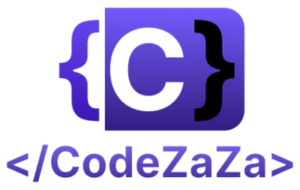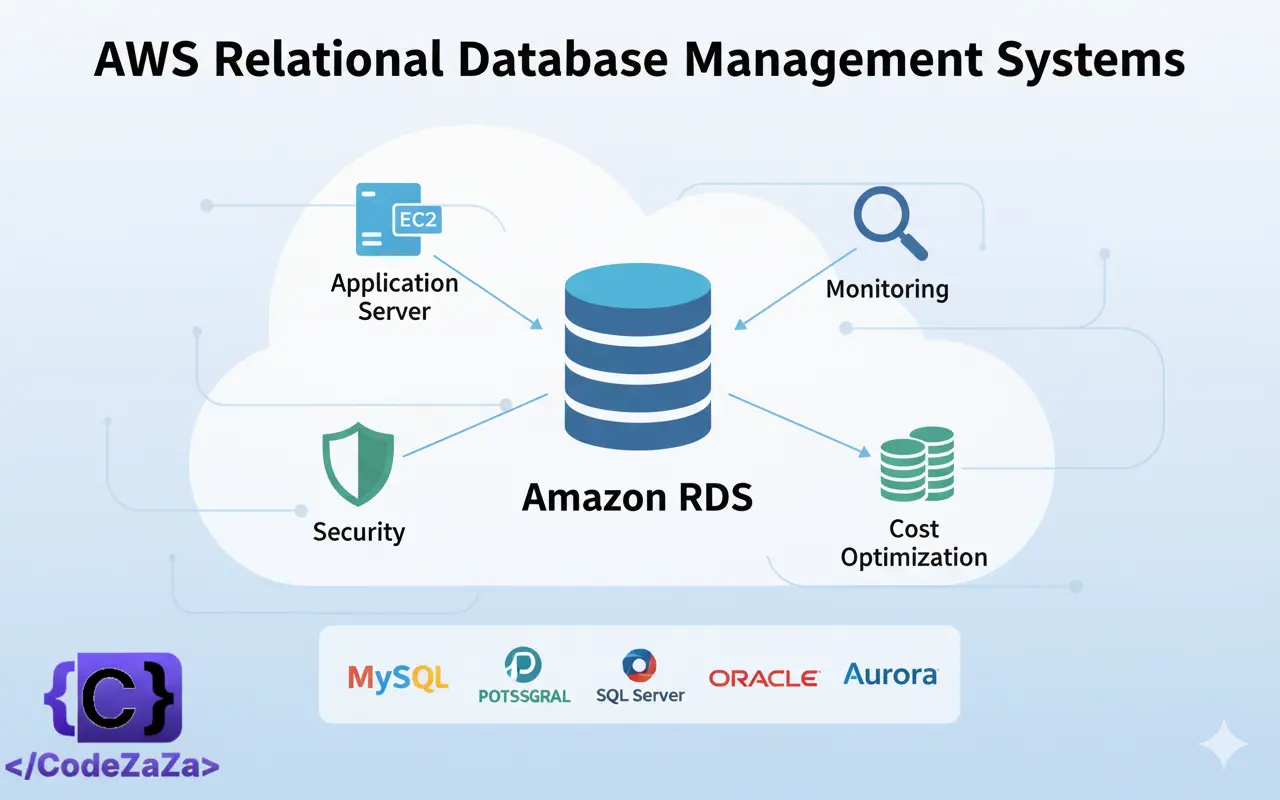Amazon RDS is an easy-to-manage relational database service optimized for total cost of ownership. It is simple to set up, operate, and scale with demand. RDS automates undifferentiated database management tasks, such as provisioning, configuring, backing up, and patching. RDS allows customers to create a new database in minutes and offers flexibility to customize databases to meet their needs across eight engines and two deployment options. Customers can optimize performance with features like with two readable standbys, optimized writes and reads, and AWS Graviton3-based instances, and they can choose from multiple pricing options to effectively manage costs.
RDS Supported Database Engines
Amazon RDS supports six main relational database engines:
Amazon Aurora (MySQL- and PostgreSQL-compatible)
MySQL
PostgreSQL
MariaDB
Oracle
Microsoft SQL Server
Benifits of RDS
1. Managed Service
Amazon RDS is a fully managed service, meaning AWS handles most of the heavy lifting involved in database management. Tasks like hardware provisioning, patching, backups, and software updates are automated. This allows developers and businesses to focus on application development and innovation rather than spending time maintaining database infrastructure. By offloading administrative tasks to AWS, operational overhead is reduced significantly.
2. Scalability
RDS provides easy scalability for both compute and storage resources. You can scale your database vertically by increasing the instance size or horizontally with read replicas to distribute read workloads. This ensures that your application can handle increased traffic without downtime or complex manual intervention. The flexibility to scale on-demand allows businesses to efficiently manage costs while maintaining performance.
3. High Availability and Durability
RDS supports Multi-AZ (Availability Zone) deployments that provide high availability and failover support. In case of a hardware failure or outage, RDS automatically switches to a standby replica in another AZ, minimizing downtime. Data is also replicated synchronously, which enhances durability and ensures that the data remains safe even during infrastructure failures.
4. Automated Backups
RDS offers automated backups that capture your database daily and store transaction logs continuously. These backups allow point-in-time recovery, making it possible to restore your database to any specific moment within the retention period. This reduces the risk of data loss and simplifies disaster recovery planning, ensuring your data remains secure and recoverable.
5. Security
RDS integrates with AWS security services to provide robust protection for your database. You can enable encryption at rest and in transit using AWS Key Management Service (KMS). Additionally, RDS supports Virtual Private Cloud (VPC) isolation, IAM policies, and network access control, allowing you to enforce strict security rules. These features ensure that sensitive data is protected against unauthorized access and potential breaches.
6. Performance Optimization
RDS offers features like provisioned IOPS (Input/Output Operations Per Second) and caching with Amazon Aurora or read replicas to optimize database performance. You can fine-tune instance types and storage configurations to meet your application’s performance requirements. Built-in monitoring tools like Amazon CloudWatch allow you to track performance metrics and make data-driven adjustments.
7. Cost-Effectiveness
With RDS, you pay only for the resources you use. It supports flexible pricing models such as on-demand and reserved instances. Automated scaling, backups, and managed maintenance reduce operational costs, while the ability to choose appropriate instance types and storage options ensures cost optimization. This makes RDS suitable for businesses of all sizes, from startups to large enterprises.
8. Support for Multiple Database Engines
RDS supports several widely-used database engines such as MySQL, PostgreSQL, MariaDB, Oracle, SQL Server, and Amazon Aurora. This allows organizations to select the database technology that best suits their application needs while still benefiting from the managed infrastructure. It also simplifies migration from existing on-premises databases to the cloud.
Amazon RDS Pricing Overview
1. Instance Types & Pricing
Amazon RDS provides a variety of instance types to suit different workloads, ranging from small general-purpose instances like db.t3.micro for development and testing to memory-optimized instances like db.r5.large for production applications requiring higher performance. Each instance type has a specific combination of vCPUs and memory, and pricing varies accordingly. AWS also offers Graviton2-based instances (e.g., db.m6gd.large, db.r6gd.large) that provide better price-to-performance efficiency. Choosing the right instance type ensures that you pay only for the compute resources you need, balancing cost and performance.
2. Storage Options & Pricing
RDS supports multiple storage types to match workload requirements. General Purpose (gp3) storage is cost-effective and provides balanced performance, making it suitable for most applications. Provisioned IOPS (io2) is designed for high-performance workloads that require consistent low-latency and high throughput, such as transactional databases. Legacy Magnetic storage is cheaper but offers lower performance and is mainly for older applications. Storage costs are billed per GiB per month, allowing you to scale your storage independently and optimize costs.
3. Deployment Models & Pricing
Amazon RDS allows you to deploy databases in either Single-AZ or Multi-AZ configurations. Single-AZ deployments are cost-efficient and sufficient for non-critical workloads, whereas Multi-AZ deployments replicate data synchronously to a standby instance in another Availability Zone, providing high availability and automatic failover. Multi-AZ deployments roughly double the cost compared to Single-AZ, but the enhanced reliability and reduced downtime often justify the additional expense for production applications.
4. Amazon RDS Extended Support Costs
AWS offers extended support plans to assist organizations with database management and troubleshooting. The Developer plan is affordable and suitable for basic support, while the Business plan offers 24/7 production support for mission-critical workloads. For enterprises with large-scale or highly sensitive operations, the Enterprise plan provides dedicated support and rapid response for complex issues. The support costs are billed monthly, and selecting the appropriate plan ensures you have the necessary assistance without overspending.
5. Data Transfer Costs
Data transfer in and out of RDS instances has associated costs. Inbound data transfer within the same AWS region is free, which benefits applications that primarily read data from other AWS services in the same region. Outbound data transfer to the internet incurs a cost (around $0.09 per GB), so high-traffic applications should consider optimizing data flow to minimize charges. Understanding data transfer pricing helps manage operational costs and plan for network-intensive workloads.
6. Public IPv4 Costs
RDS instances can be assigned a Public IP (Elastic IP) for external access. AWS does not charge for an Elastic IP when it is associated with a running instance, but charges apply if the IP is not associated. This pricing model encourages efficient resource usage, ensuring that organizations only pay for public-facing IPs when they are actively in use, helping manage infrastructure costs.
7. Free Tier Offerings
Amazon RDS offers a 12-month free tier for new users, which includes 750 hours of db.t3.micro instance usage, 20 GiB of General Purpose SSD storage, and 20 GiB of backup storage. This free tier is ideal for developers and small-scale applications to experiment, learn, or prototype without incurring costs. It supports MySQL, MariaDB, PostgreSQL, and SQL Server Express Edition, providing flexibility for various development environments while minimizing initial financial investment.
Connecting MySQL RDS DB to EC2 instance.
Tutorial: Connect an Amazon EC2 instance to an Amazon RDS database – Amazon Elastic Compute Cloud
Connecting MySQL RDS DB to EC2 instance.
Step 1: Dashboard of RDS Service
Step 2 : Create a Database.
Step 3: Choose a database creation method.
.
Step 4: Select the database Engin option
Select the database engine as MySQL
Step 5: Select the version.
Step 6: Select the Templates
Step 7: Setting the database.
Enter the username Master Password for access the database.
Step 8: Define Instance configuration and Storage.
Step 9: Select the connectivity
Step 10: Select the VPC
Step 11: Click on create database.
Step 12: Database is created.
Step 13: Launch an instance.
Step 14: Add rule in security group.
Step 15: Connect to an instance
Step 16: Update the system
Step 17: Install the mysql-client
Step 18: Connect to the the mysql database
- mysql -h <Endpoint_url> -u <username> -p
- Enter the password:
Step 19: Create a database.
Conclusion
Amazon RDS provides a fully managed, secure, and scalable relational database service that simplifies database administration tasks. Its pricing depends on multiple factors, including instance type, storage type, deployment model, support plans, data transfer, and public IP usage.
- Flexibility: RDS supports multiple database engines (Aurora, MySQL, PostgreSQL, MariaDB, Oracle, SQL Server, IBM Db2), making it suitable for a wide range of applications.
- Cost Control: On-demand pricing, Reserved Instances, and the free tier allow cost optimization for both small and large workloads.
- High Availability & Reliability: Multi-AZ deployments, automated backups, and read replicas ensure durability and performance.
- Scalability & Performance: Vertical and horizontal scaling options, along with Aurora’s high performance, help meet growing application demands.
- Security & Compliance: Built-in encryption, VPC isolation, IAM integration, and support for regulatory compliance provide enterprise-grade security.
In short: Amazon RDS balances ease of management, performance, availability, and cost-efficiency, making it ideal for production-ready applications while eliminating the operational overhead of self-managed databases.


